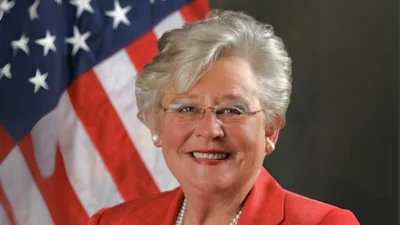AUBURN UNIVERSITY, Ala. – Every corner of Alabama contains water. With more than 132,000 miles of waterways, the state and its people impact water resources every day. An Alabama Cooperative Extension System specialist shares tips for protecting water resources.
Streams are Alive
Alabama Extension Water Resources Specialist Eve Brantley said everyone connects with water in some way. This fact resonates when considering recreation, transportation and drinking water.
“Our streams, rivers and lakes are alive, and we are all connected to them,” Brantley said. “These resources along with our nation-leading aquatic biodiversity means we all have a stewardship responsibility.”
With the abundance of streams and rivers in Alabama, Brantley said you could circle the Earth five times. This unparalleled biodiversity directly correlates to the amount of aquatic habitat Alabama contains. For example, Alabama is home to 97 native crayfish species along with more than 200 species of freshwater snails.
“Snails typically don’t get people super excited,” Brantley said. “But this means that every time you go into a creek and search under a rock, you are going to find life of some kind.”
The First Conservationists
Farmers are considered the world’s first conservationists. Their livelihoods are directly dependent on the environment around them. If any degradation of soil or water occurs, it not only negatively affects the environment but also their bottom line.
Brantley said farmers learned from the Dust Bowl of the 1930s that soil protection is key to improving agricultural production.
“Protecting our soil is important to having a resilient farming system,” Brantley said. “Keeping soil in place also means we are keeping nutrients in place – ultimately protecting water resources.”
Two primary practices farmers use to sustain water quality are conservation tillage and cover crops. Conservation tillage is a management practice where farmers intentionally leave crop residue on the field. This provides a barrier to heavy rain that displaces soil particles that may transport nutrients or chemicals.
Cover crops are similar in a way because farmers use vegetation to improve soil health. After a cash crop is harvested, a cover crop is planted in its place to protect and reinvigorate the soil through soil retention and building carbon. Conservation tillage and cover practices are a win-win for farmers and water resources.
Threats to Water
Brantley said the number one threat to water resources in the United States is pollution from storm water runoff. Alabama Extension, along with the Auburn University Water Resources Center, create ways to work together to positively impact water in the state.
“When it rains, water washes over the landscape–picking up litter, oils and gases, pet waste and other unwanted substances,” Brantley said. “These substances are then deposited into the nearest water body. The good news is, we have control to mitigate those impacts.”
If one person in a neighborhood overfertilizes a lawn, it should have little impact on water quality. However, if 1,000 people in the same neighborhood do the same thing, it could have severe effects on storm sewers–ultimately degrading the quality of local surface water.
These potential compounding consequences of environment mismanagement mean education is critically important.
Sustaining Healthy Water
Brantley said the best start to sustaining healthy water resources is public awareness.
“Just getting people to recognize that there are streams and other waterways around them is critical–especially in Alabama,” Brantley said. “From awareness, we can build toward education that opens the door to learning about natural processes.”
One of the best ways that someone can learn about their local environment is citizen science, or the public’s participation in scientific research. With so many water resources in Alabama, it can be difficult to have eyes on every mile of streams and rivers.
“Quality trained and assured citizen scientists help us in pinpointing priority areas,” Brantley said. “This avenue expedites locating areas that need the most protection.”
Alabama Extension and the Auburn University Water Resources Center offer multiple programs that promote healthy water resources.
- Alabama Water Watch is a citizen science program that provides the opportunity to learn about local water resources.
- Private Well Program is a program designed to educate homeowners on where to test domestic drinking water wells, why testing is important and how to interpret the results.
- Alabama Watershed Stewards is an Alabama Extension program that provides the tools necessary to install green infrastructure and mitigate stormwater pollution impacts.
Brantley said her focus on water resources has been rewarding. Her strong relationship with nature was passed down from her parents, both of whom are biologists. She said the same inherited wonder of water is given to others through education. This is especially true when young students quite literally get their feet wet with science.
“Seeing kids out in a creek turning over rocks, finding a crayfish or two or learning that dragonflies begin their lives in streams is amazing,” Brantley said. “There is hardly anything more rewarding than seeing that light turn on in their minds.”
Brantley also said working with water is going to become more and more important in the future. She adds that it is a job that anyone can learn to do, and it has the potential to inspire others by expanding knowledge of the world around them.
Down to Earth: Agriculture Sustains Alabama
Alabama Extension is getting Down to Earth. Why? Because agriculture sustains Alabama. Whether your ag experience is in the grocery store, in the classroom or as your profession—Extension has a resource for you.
We are proud to be partnering with the Alabama Agribusiness Council, the Alabama Cattlemen’s Association, the Alabama Department of Agriculture and Industries, the Alabama Farmers Federation, the Alabama Poultry and Egg Association, the Alabama Forestry Commission, Sweet Grown Alabama and the Alabama Association of RC&D Councils.
Alabama Extension’s Down to Earth resources are available on www.aces.edu/go/DowntoEarth.
Original source can be found here.




 Alerts Sign-up
Alerts Sign-up